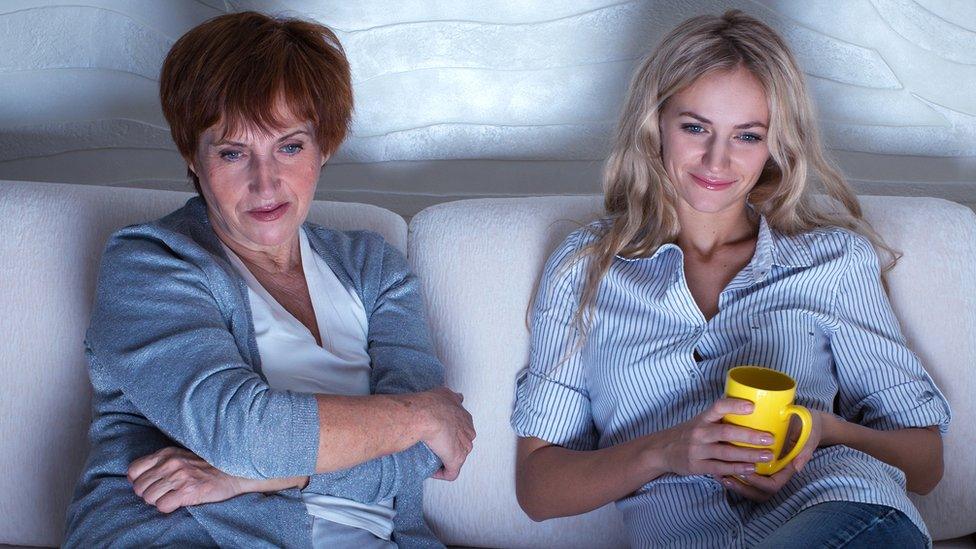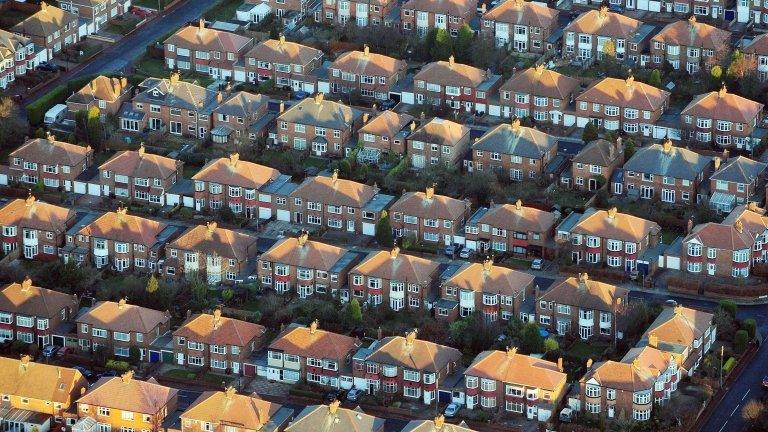From boomers to stay-at-home boomerang generation
- Published

Not moving out, moving back. Record numbers of young US adults are living with their parents
Parents might worry about the day when their children leave home - but they might worry even more if they kept coming back.
Not just for a few recuperative months now and then - but for years and years, into their mid-30s.
There are some remarkable figures from the United States showing how much this has become the rule rather than the exception. This really is generation failure-to-launch.
For the first time, in US records going back to the 1880s, people aged between 18 to 34 are more likely to be living with their parents than being married or co-habiting with a partner., external
It's a trend that is particularly affecting men, who now seem the most reluctant to close the door on their teenage bedroom.
Since 1880 - and until these latest figures for 2014 - the most common pattern has always been for young adults to set up their own household with someone else.
Now these home-makers have been narrowly overtaken by those staying at home, with an analysis by the Pew Research Group showing more than 32% are sticking with their parents.
We've gone from the boomers to the boomerangers.

When are they ever going to leave?
There are also rising numbers living in various types of shared accommodation and more than ever are living alone.
The most striking generational shift is the huge decline in the numbers of young people moving out to get married or live with a partner.
In 1960, 62% of these young adults had set up their own household with a partner by the age of 34. In 2014, that had fallen to less than 32%.
The stay-at-home trend is also happening in the UK, with insurance firm Aviva forecasting that the numbers of adult children living with their parents, up to the age of 34, will increase by a third to 3.8 million in the next decade.
So what is causing this great shift in behaviour?
The US researchers identify two big factors: love and money.
People are getting married and settling down later in life, having children at a later age, buying their first home later - and all this delays the point of departure from the family home.

Stagnant pay levels have meant that many young people cannot afford to get their own home
There are also more young people who remain living alone. In 1960, only 5% of young adults were in a single-person household and this has risen almost threefold to 14% by 2014.
The Pew researchers also say there are more single people - and young adults not in relationships are less likely to move out.
But there is no escaping the financial pressures.
Living independently means having enough money to rent or buy. And this generation has faced a toxic combination of high house prices, high rent, insecure jobs and stagnant wages.
In real terms, when inflation is taken into account, the typical earnings of a young man fell by 34% between 2000 and 2014.
There are parallels with wage stagnation in the UK, where official figures for graduate earnings showed that typical salaries of £24,000 for young graduates in 2008 had not risen at all by 2015.
But graduates are relatively well off and the US figures show that the biggest stay-at-homes are those with the least spending power.
The most likely to have moved out and set up their own homes are white, female and with university degrees.
Black and Hispanic males without a college education are the most likely to be living with their parents, even as they head towards their own middle age.
It reflects a lack of social mobility in its most literal sense, with some of these young people never getting further than their own doorstep.

The number of young adults living in their own household with a partner has halved since the 1960s
The decline in independent living has its own economic consequences, with less consumer spending on all kinds of house-buying, furniture and services that would be bought by starter-home couples.
There are also suggestions that this is putting financial pressure on middle-aged people - who instead of downsizing are still supporting children, who are getting their own first grey hairs.
But it's really another example of tough times for the younger generation.
And it also shows the gap between the glitzy world of sky-high property prices and the frustrating reality of young people without any real prospect of ever getting their own front door key.

Maybe parents secretly enjoy this extension of their parenthood
These youngsters are locked out of what would once have been an expectation of getting their own home.
There could also be a more positive interpretation of all this.
Maybe the generation gap is closing and adult children are more comfortable living with their parents.
Perhaps the older generation - convinced that 50 is the new 30 - privately don't mind this never-ending extension of their parenthood.
There might be a greater emotional closeness - and it's not just a relationship built on rent-free living and access to Netflix and the fridge.
- Published21 January 2014

- Published21 January 2014
- Published13 October 2012

- Published5 November 2011
